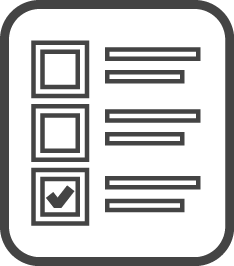 |
Welcome! |
|---|
  |
Step 1: Update Your Profile and Contact Your Professor |
|---|

In this first step, you will update your profile with your information and email your professor to set up an appointment by phone. This appointment request must include your contact information, such as personal email and a current phone number, so the professor will be able to contact you. This will provide an opportunity to clear up any questions you may have about the course.
Watch this video on how to update your profile, contact information, and settings:
Canvas LMS (Producer). (2015). 111 – User settings & profile picture [Video file].
Available at https://vimeo.com/74243735
In addition to contacting your professor by these means, you will also be required to attend a live virtual session with your instructor and other classmates, where you can address any other questions and discuss key concepts to help strengthen the knowledge you have gained. Your instructor will specify the time and date of the sessions under Announcements on your course homepage.
 |
Step 2: Study and Discuss the Syllabus |
|---|

The syllabus contains important information that is vital to your successful completion of this course. To view your course syllabus, go to the Syllabus link in the main course menu, where you will also find the course calendar and activities. Read it over carefully and refer to the Announcements section or the Conference button, where your professor will schedule a live virtual session to discuss the syllabus. If you are unable to participate in this conference, you can access the recording of the session to obtain the information your professor discussed.
To access your course syllabus (online & PDF format), go to the course menu and press the Syllabus link.
  |
Step 3:Â Academic Integrity and APA Style |
|---|

At Florida Technical College (FTC), we seek to equip our students for success as both students and professionals. Maintaining academic integrity is an essential component to achieve this goal. In this step, you will review best practices for academic integrity and avoiding plagiarism, as well as the correct format for citing sources, providing references, and writing papers according to the APA Style Manual.
For examples of how to reference different types of sources in APA format, you can use this APA Style Quick Guide, which will provide you with a quick and easy reference to the basic standards of APA writing style for our institutions, regarding the structure and organization of written works, the different types of citations, and the reference list. It contains examples of references for resources such as books, articles, theses, videos, images, software, and other electronic sources.
For more detailed information and tutorials on APA style, you can go to the following APA Style websites.
American Psychological Association. (2016). The basics of APA style.
American Psychological Association. (2016). APA style central.
American Psychological Association. (2016). APA style blog.
Purdue University Online Writing Lab (OWL). (2017). APA style.
 |
Step 4:Â Course Content Overview |
|---|

This course is divided into four weeks and contains laboratory reports, practice exams, a midterm and a final portfolio. Here is an example of the evaluation criteria table you will find in this course.
| Groups | % of Total | Activity # | Week 1 | Week 2 | Week 3 | Week 4 | TOTAL |
| Professionalism | 10 % | Â | |||||
| Lab Reports | 20Â % | Â | |||||
| Practice Exams | 50 % | Â | |||||
| Midterm Portfolio | 10 % | Â | |||||
| Final Portfolio | 10 % | Â | |||||
| Final Grade | 100 % |
The first group of activities is the Professionalism category – your performance in this category will be evaluated throughout the entire course.
Professionalism refers to your compliance in contacting your instructor for any absences, with updates regarding the reason for the absence, a return date, and makeup work requests, keeping cell phones on vibrate while in live class sessions and using them only in urgent/emergency situations, maintaining respectful communication in the classroom and on campus, and observing the college dress code while in live, camera-operated or videotaped classroom sessions. It also includes regularly participating online via the Coding Simulator and Canvas platform, completing assignments, and maintaining respectful and clear communication with your professor and classmates at appropriate times, as well as other related forms of professionalism.
Professionalism is key to your academic success and career preparation, and we are committed to help you develop or enhance the proper aptitude of a professional. Click here to examine the rubric used to evaluate professionalism in this course.
The other evaluation criteria categories will be evaluated through specific rubrics for graded activities throughout the course weeks.
 |
Step 5:Â Simulated Medical Coding Internship |
|---|

This course requires you to complete a final portfolio using a current medical coding software simulator. This experience is a vital part of your education that serves as a capstone experience to demonstrate your level of expertise. The Simulated Medical Coding Internship will allow you to complete all the on-task hours needed to comply with this course requirements.
You will be able to access the simulator by clicking the provided link in each task. However, before accessing the simulator to complete your course work, please review the Orientation file included here. This file includes information on how to log in into the simulator, maintain patient confidentiality while working with the simulator, navigate the main screen, access the modules, reports, and exams, and log out of the simulator.
As you begin your practice, it is important to note that the simulator DOES NOT save any work online. In order to show proof of work during a session, you must download or print your work before exiting the program. Every time you log in, a new session will begin. When you log out or close the window, your session will end and all progress will be lost. The list of reports completed during your current session only will appear in the Portfolio Builder, along with the report titles, results for practice exams, and options for downloading and printing them.
If you have questions on the operation of the program, you can access the Orientation information again at any time by clicking the “Help†button located at the bottom right of the simulator’s screen (or in the main screen).
 |
Summary: |
|---|
Now that you have completed these initial steps, you are more familiar with the platform and have a good idea of what to expect in the course. At this point, you can move on to the specific subject matter activities with a clear understanding of your responsibilities, the grading system, and the ground rules for this online course. You are now ready to begin Week 1.
 |
|---|